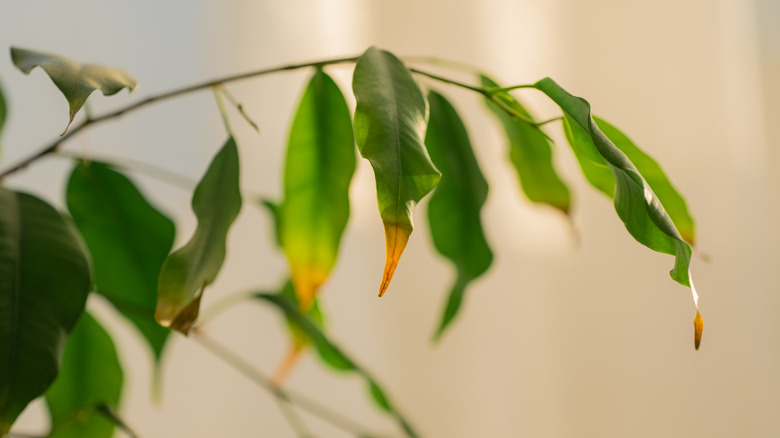An Easy DIY Soil Mix That Helps Plants Thrive Without Waterlogging
Many common house plants require fast-draining soil because they are used to dry environments. Succulents, cacti, and ponytail palm are some of the best indoor plants because they'll stay alive if you skip town for a week or leave them on your office desk over Christmas vacation. If you have difficulty maintaining these types of plants, it's not because you lack a green thumb. They probably just aren't in the correct soil.
Plants require specific soil types in order to absorb the right amount of water. If you've ever watched the leaves of your plants turn yellow and whither, this could be the result of their soil not draining properly. Waterlogged soil will prevent oxygen from getting to the roots, causing them to rot. Overwatering can also cause fungus to grow. Once you notice these symptoms, you should give your plants less water.
If after making these adjustments, the soil is still moist to the touch your drainage problem could be a result of the soil's consistency. A drainage hole in your pot is key here, but keep in mind that heavy soils such as clay tend to trap water. If the dirt is very compact, it may not be draining well enough, but you can easily fix this problem with a super simple DIY soil mix that avoids waterlogging.
Mixing your own fast-draining soil
The TikTok account @plantcarefamily offers a tutorial for how to create fast-draining soil. All you need is potting soil, perlite, orchid bark, and sphagnum moss. The perlite and orchid bark will make the soil less compact, allowing air to get in and nourish the root system. The moss will capture moisture so that your plant still has enough water to thrive. Mix these ingredients together in a bucket until you've reached the appropriate consistency. It should appear chunky and light.
You can add a new plant to this soil mix, or you can move one of the plants you already have into it. Repotting is a simple process that only takes a few minutes. Just remove the plant from its current pot and use your fingers to remove most of the soil from its roots until the roots are dangling. Handle the plant carefully, making sure not to break its stems or sever its tap root. Then dig a hole in your new soil, place the plant in, and snugly fill the dirt around its root system. Give it a good watering and allow it to adjust to its new — hopefully drier — environment. If you run into any more issues, there several tips for watering that you should keep mind, including using a gradual flow device.
